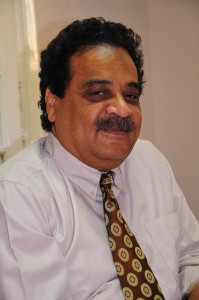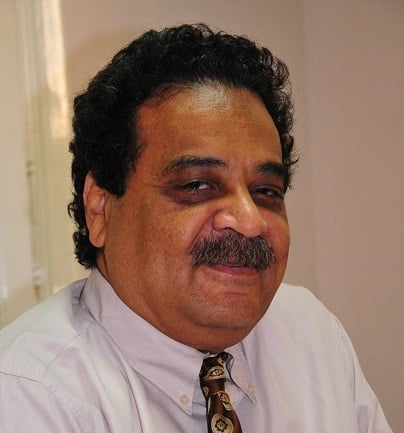
It should be clear, as pointed out in several of my previous articles, that Egypt’s political circuit consists of three primary forces. The first of these is the country’s Islamist movement, made up primarily of the Muslim Brotherhood, and the second is those forces that seek to revive Egypt’s “old” hegemonic state, with the army, police, bureaucracy and state security forces at its core. Lastly, the third group consists of the country’s democracy movement, that seeks to build a modern, civil state founded upon the principles of the revolution and administered by those political parties that were born from the revolution’s womb. These movements are all conscious of the type of country they would like to create, with the first seeking to establish a repressive Islamist state, along the lines of many others already seen throughout the region. The second group seeks to revive Egypt’s hegemonic, pre-revolutionary regime, which some have preferred to refer to as the “nationalist” or “patriotic” state. Egyptians are all too familiar with this last form of government, having been exposed to it in the form of the Nasser, Sadat and Mubarak regimes. The third group on the other hand, aspires to construct a democratic state, something which no country in the region, let alone Egypt, has truly enjoyed except briefly and in pseudo form during the period between 1919 and 1952. As most know, however, this era of democracy came equipped with foreign occupation and a series of rigged elections that only allowed the Al-Wafd party to rule the country for 7 intermittent years, despite their popularity among the Egyptian masses. Despite this, we feel that the accomplishments achieved during this era can serve as a model, one that we can build upon to establish a new democratic state inspired by the experiences of this period, with all its successes and failures.
Before I end my discussion regarding the motives of Egypt’s three main political forces and their vision for the future of our country, it is necessary to clarify that there is some overlap between these groups as a result of various political factors. For example, supporters of democracy in Egypt also yearn for the establishment of a strong hegemonic state, along with the country’s Islamists, who are also willing to allow for a little democracy to be practiced.
The question then becomes, what are the tactics that will be used by each of these forces in order to achieve their goals? In other words, what is each group’s strategy for assuming power and implementing their model for statehood? With regards to radical, revolutionary groups, they are most likely to choose confrontational, albeit less than legal, means of pursuing their goals. This is the case for groups in Egypt and all over the world. Reformist movements, on the other hand, most often prefer to adopt moderate methods that seek to work within the system to accomplish their goals.
We cannot deny that the Muslim Brotherhood has successfully obtained power, although this is not to say that they have succeeded in accomplishing all their goals, as many obstacles still exist along the path to creating a religious state. The tactics they have adopted in pursuance of this goal can and have been labeled by some as the “Ikhwanisation” (i.e. Muslim Brotherhoodisation) of the state, accomplished through the systematic removal of as many of Egypt’s democracy supporters and elements of the old regime as possible from state bureaucracy and institutions, in addition to passing laws that cause the country to be enveloped in an ever more religious tinge. The Muslim Brotherhood does not seek to embrace Egypt’s various political movements, or enter into long term alliances with them, but rather to systematically eliminate them or use them as temporary stepping stones in pursuance of other short term goals. What the Muslim Brotherhood seeks to do in reality is to impose a new, repressive state, where power is concentrated in the hands of a small, select few, who exercise their authority based on religious claims.
Those who would seek to revive Egypt’s old, pre-revolutionary regime, either for better or worse, have no new tactics at their disposal to assume power other than those used before the revolution, with some individuals split as to whether to draw inspiration from the Nasser, Sadat, or Mubarak eras. Regardless of the details, we can safely say that this group continues to draw motivation and support from the country’s old power structure, chiefly that of the military, who they would hope to see intervene in the country’s affairs and once more launch a coup. However, how to get the army to assume the reigns of governance once more? Some seek to use individual agents, while others will attempt to fuel the intensity of Egypt’s street protests and clashes as a pretext for military intervention. They view the mobilisation of hundreds of thousands of people throughout the squares of Egypt not as an outburst of revolutionary fervor, but rather as a calculated move that can be successfully orchestrated and pulled off with the right amount of funding and competent administration. That being said, any failure to re-ignite such a “revolution” (or more accurately, counter-revolution), that could possibly serve as a pretext for military intervention, will not be seen by this group as a result of the revolution itself having lost momentum, but rather as a logistical error committed on the part of those responsible for orchestrating such mobilisation. Such a reality will lead this group to seek more money and resources from its network of wealthy donors and supporters, or change the leadership of those responsible for mobilising the masses. For this group, the overthrowing of the Muslim Brotherhood and the revival of the country’s old, “hegemonic” state depends entirely on the military, and the power of money to influence politics.
However what about Egypt’s democracy movement? What is its strategy to overthrow the Muslim Brotherhood? I personally see the movement as stuck between two specific tactics which do not necessarily contradict each other. First, continue to take to the streets and protest in large numbers, until we succeed in overthrowing the Brotherhood and establishing a new regime. In short, a recreation of January 25th, 2011. The second tactic is to attempt to overthrow the Brotherhood using democratic means, by taking to the ballot box in all of the country’s parliamentary, local and union elections. The final blow would be dealt by competing with the Muslim Brotherhood for positions in the country’s various bureaucracies and state institutions, all the while peacefully demonstrating against the organization’s repressive policies. The first tactic views the outbreak of a revolution as an involuntary reaction to the state of Egypt’s government and ongoing political events. Any failure of such a revolution to materialize, therefore, will be blamed on the country’s activists and democracy advocates, as opposed to the reluctance of the masses to gather and mobilize. The second tactic, on the other hand, views daily political struggle not as an obstacle to the outbreak of a second revolution, but rather as that which will aid in its launching.




